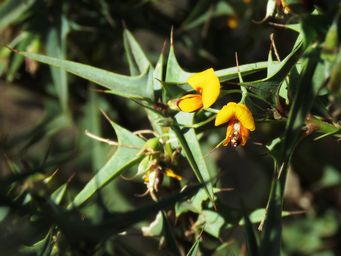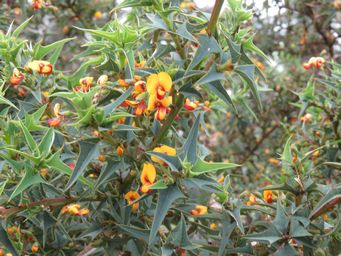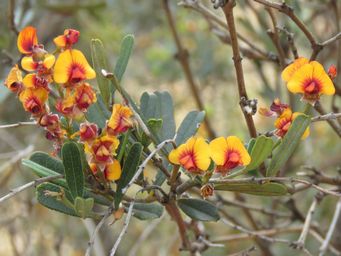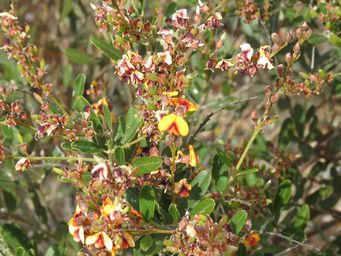Australia So Much to See







Gastrolobium spinosum, Prickly Poison
A yellow and red pea flower, with fine red stripes on the rear of the banner (sail). Slight indention at top of banner. Shrub has large, stiff and very spiny edged leaves. Photos here show a variety of leaf types.
Leaves are opposite.
November
Photos above at Dragon Rocks Nature Reserve, Newdegate, and photo at right from Kulin, Wheatbelt region,
Western Australia. Occurs from Geraldton to Esperance, throughout the Mid West, South West, Wheatbelt and Great Southern regions
and into the Goldfields


Gastrolobium trilobum 2010 (formerly Gastrolobium spinosum var. trilobum), Bullock Poison
Yellow or orange pea flowers with red
central markings and a red keel. A large bush with a leave divided into three with the central portion being long, and each section
terminating with a spike. Leaves are opposite.
October
Boyup Brook, South West region, Western Australia, and found into the
Mid West at Three Springs, through the Wheatbelt, into parts of the South West regions.


Gastrolobium parvifolium, Berry Poison, Small-Leaved Gastrolobium, Small-Leaved Poison-Pea, Small-Leaved Butterfly-Pea
Yellow orange
and red pea flowers on a spindly and spreading small shrub, with short narrow leaves. Leaves are opposite.
August
Wongan
Hills in the Wongan-Ballidu shire, Wheatbelt region, Western Australia, and can be found through the inland Wheatbelt from Wongan
Hills to Kukerin (Dumbleyung shire) and east to Westonia.